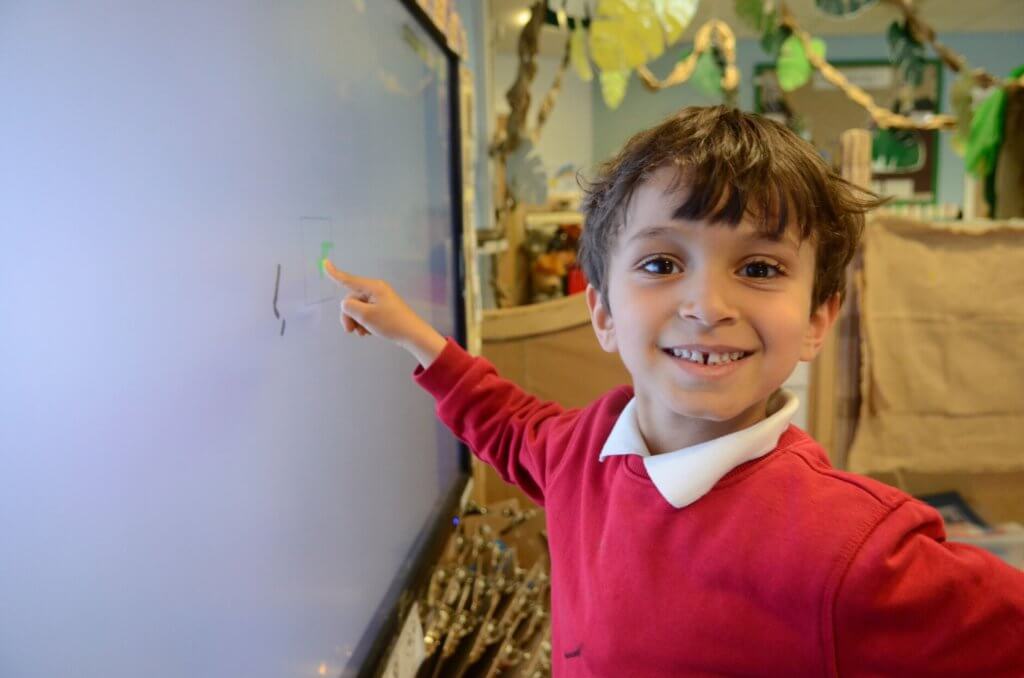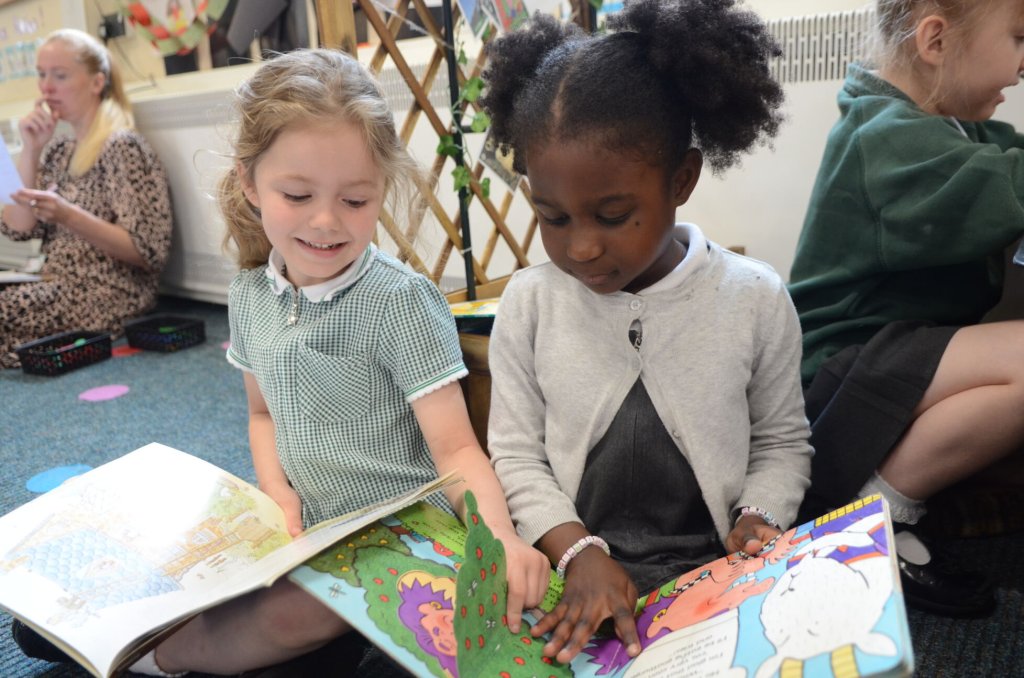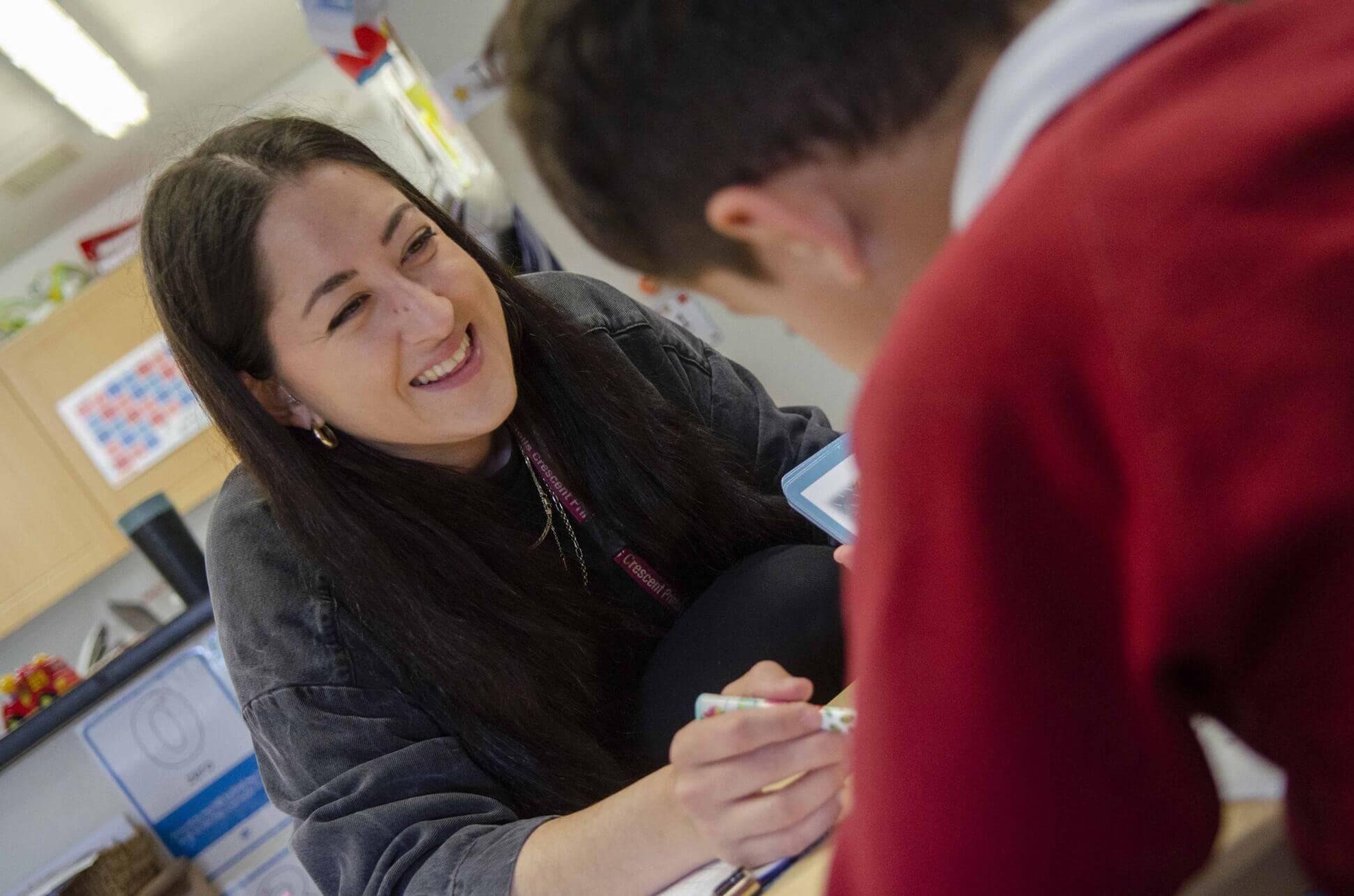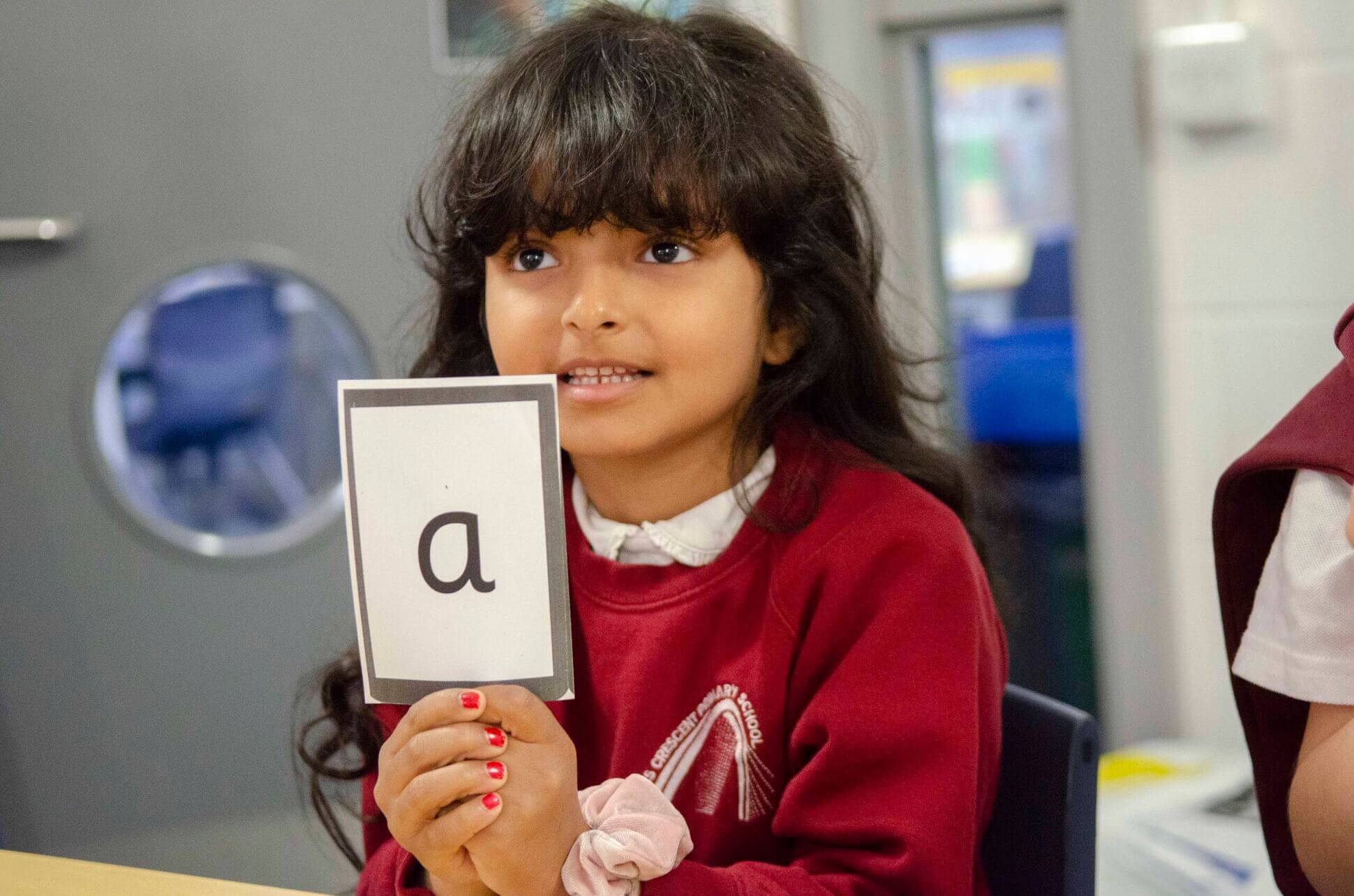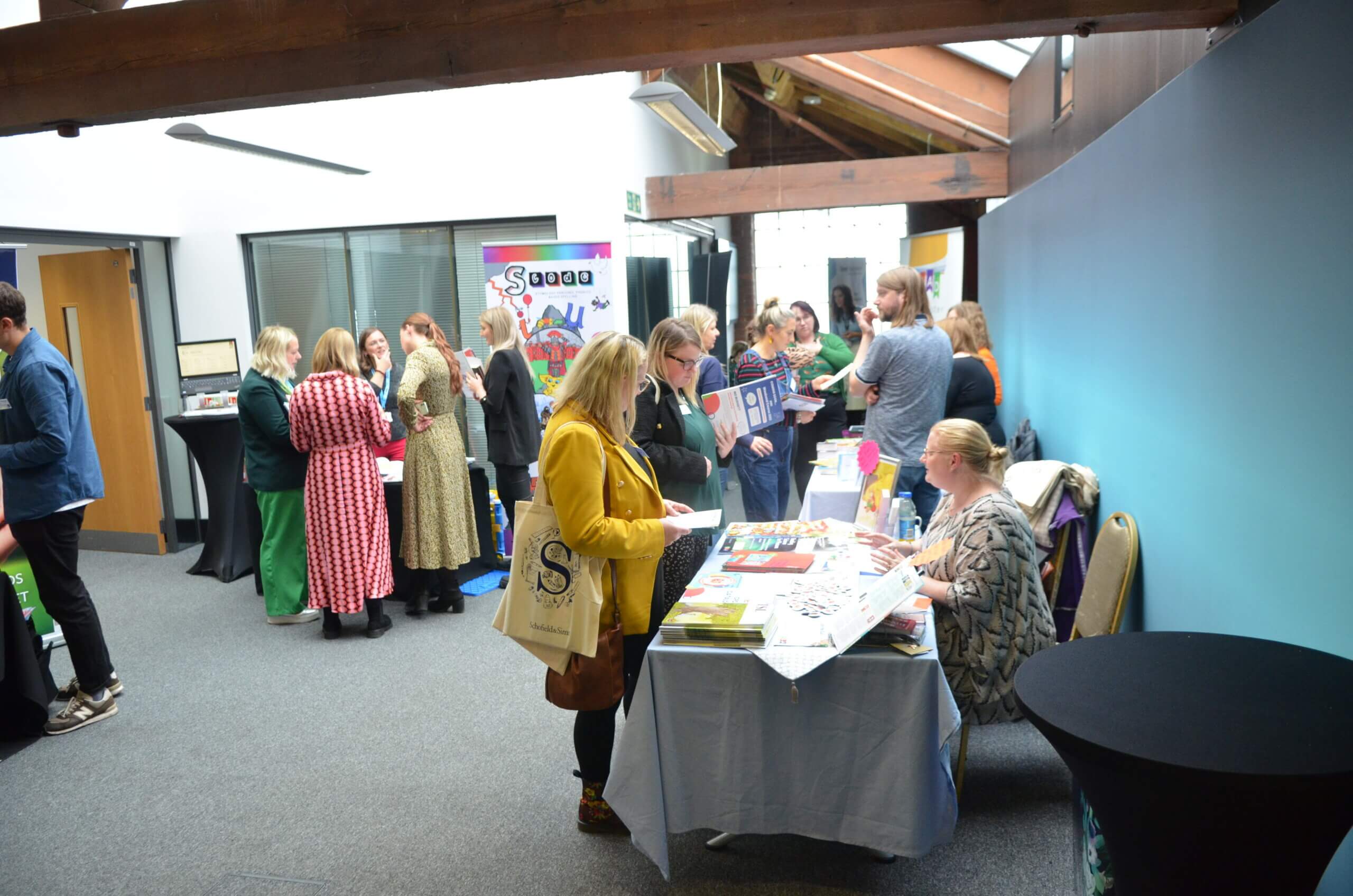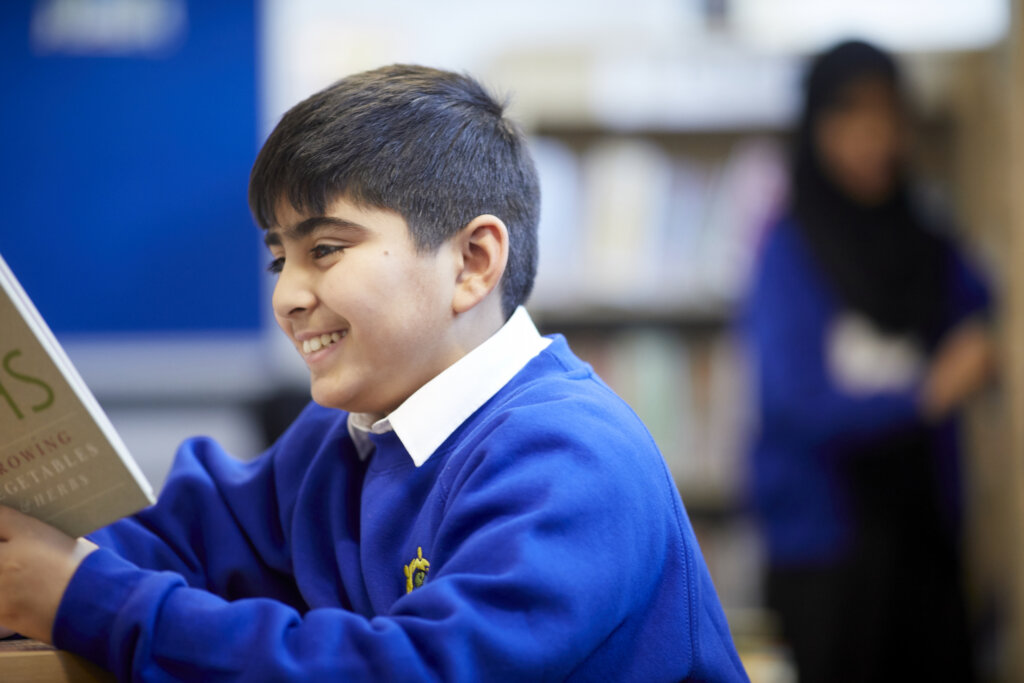Reading is all around us. We encounter print in a huge variety of forms day to day, both at school, at home, and everywhere in-between. As adults, we read automatically the vast majority of the time, without even really noticing the text around us. Consider when you last saw a poster for something – you are very likely to have ‘read’ the poster without actively reading it. But we are confident readers. We have learned to read fluently and automatically with self-regulation, becoming good readers who can read for pleasure and purpose.
For pupils whose reading has not already become second nature, we have to not only consider the teaching of the mechanics and understanding of reading, but also the environment within which we read. We have to make careful choices so that our environment is not only a reading environment, but a reading rich environment.
But what does a reading rich environment look like? Langlois (2016) found that they are “…made up of setting, text types, mood, time, attitudes and purpose.” A rich reading environment doesn’t just mean displays and neat bookshelves. In order to really interrogate our reading environments, we need to consider three areas of school: classrooms, the library and the wider shared school environment.
Reading in the classroom: immersion in texts
If a child stood at your classroom door, what would they see? What would your classroom communicate? To build a reading rich environment, we need to carefully consider the experience we provide within our classrooms.
What does the reading classroom look like? A crucial consideration is how you share that reading is a priority throughout your visual environment. Having a reading area and display can support your message, so long as it is powerful instead of passive. Whether planning your reading area or a display, thinking about how the space will impact pupils’ reading attitudes is important. Considering how best to organise your books to ensure all pupils can find something that interests them; thinking through how best to collate pupils’ recommendations and how to share your own reading journey may be a good place to begin. Focusing in on books themselves can be useful, exploring how best to display them throughout the learning environment, so that pupils’ interests are piqued. But more than anything, considering how you can make your classroom a comfortable space for reading, is the key. Where can pupils sit when they read? Do they always have to sit, or can they lie down? Who do they sit with? Why? At the moment, social distancing will be making decisions about your reading environment in the classroom more problematic. Although you may not be able to organise your reading rich environment as you would like to right now, it is important to still think about what we can do. How can we organise books so that pupils still access recommendations and make their own choices? How can we make our displays engaging and purposeful whilst our reading area may not be able to be used as actively?
What do you read? Ask any teacher what they would do to improve the reading environment, and their response would probably include at least some reference to sourcing reading material. A crucial part of the reading rich environment revolves around texts – not just books, but all texts of all types. A reading rich environment must make texts accessible and engaging to pupils, actively encouraging them to read independently. It depends on staff communicating their knowledge of children’s literature, both new and classic, with pupils. How many texts do you share with pupils? How do you choose them? How do you build on pupils’ interests?
How often do you read? For reading to flourish, we need to build in as many opportunities for reading as possible. This could be in the form of reading lessons, reading in other subjects, reading for pleasure, reading for purpose or reading aloud. What is crucial is the number and range of such opportunities, and by whom they are led. Having a reading rich environment means having protected reading time, giving pupils opportunities not just to read texts and hear texts, but talk about them, sharing their thoughts, feelings and preferences. The Research Rich Pedagogies ‘Teachers as Readers’ project builds on this idea in their research Social Reading Environments. By increasing the amount of time reading, and involving everyone in reading, we show its importance. How much time do you spend reading in your class? How many people are involved in reading? How much ‘book blether’, as Teresa Cremin would term it, goes on?
We spend the majority of our time reading within classrooms, which is only natural considering that is where we actively teach reading. However, in order to build a reading rich environment, we must think outside of that box, and extend the reading rich environment throughout the school.
A good school library: the beating heart of the school
A good school library is an important part of building a reading rich environment. Whether a whole room, or a smaller space in school, a library is not just a place from which to borrow books, but a beacon for reading. It can broaden your pupils horizons and so much more. The National Literacy Trust (2019) found that children and young people who used the school library showed:
- Better reading attainment.
- Better mental wellbeing.
- Higher levels of reading enjoyment, reading for pleasure and reading confidence.
- Higher levels of writing confidence and writing for pleasure.
- A tendency to read and write a greater range of material.
For children and young people who receive free school meals, these outcomes were even more significant. However, not every child currently benefits from this great resource. The Great School Libraries survey found that 1 in 8 pupils do not have access to a school library. Even more concerningly, the survey noted that schools with a higher proportion of children receiving free school meals were more than twice as likely not to have access to a designated library space. We know that it can be challenging to find an appropriate space or the budget needed to create a school library. Grants such as those from the Foyle Foundation can be a great source of help when developing your own library. If room is an issue, getting creative with smaller areas around school can be a great way of having designated library space without the need for an entire room devoted to it. You could use book nooks, key stage or class libraries, which though smaller, can be just as powerful.
Albert Einstein once wrote, “The only thing you absolutely have to know, is the location of the library.” Although he was not extolling the virtues of the school library, Einstein’s view of libraries is one which we can learn from. Rather than saying reading is important, he specifically focused on the importance of the library as a central place, a bank of the world’s knowledge. To Einstein, the library was more than the books within its walls, and we should think about our school libraries in the same way. We need to think about the space in which our library is located; the resources it houses and the way it is used. Right now, in the midst of the COVID-19 pandemic, you may not be able to use your library in the way you would wish; however, it is still important to think about the longer term impact of your library and how you can continue to develop it.
- Space. Ideally, a school library needs to be in a prominent place in school which shows its importance and where a group of children, preferably a whole class, can visit at the same time. The space needs to be engaging and inviting, with opportunities to share a love of books in evidence, e.g. a recommendations box, a ‘What am I reading?’ wall. Children need to be involved in its creation and development: they need ownership of this most important of reading spaces.
- Resources. It is vital for reading resources to be up to date, engaging and varied, with pupils able to easily find what they are looking for. School libraries fail when pupils cannot find a book, or other text, such as a comic or magazine, they want to read. Taking the time to audit what you have and plug any gaps, with input from children, can make a huge difference.
- Use. Your space may be visually beautiful, but how are pupils and staff, even parents, using it? Every class needs to have dedicated library time, ideally with the chance to share books, make recommendations and become a social reader. Where possible, thinking about how pupils can access the school library with their parents is also an important consideration, building links between the school reading environment and that of home. At the moment, a key consideration may be how pupils are accessing your library in a safe, socially distanced way. Schools are coming up with fantastic ways of making their library resources accessible through book trolleys, quarantining returns, staggering visits. Whatever you can do to keep this valuable space accessible will make a huge difference to pupils and their engagement with reading.
If we want to build a reading rich environment and subsequently a love of reading, our first port of call needs to be our school library. Having a library in school is key to the promotion of reading – it tells pupils that you consider reading to be important. Consider your current school provision. Do you have a designated library space? Is it in an area of the school that shows it is prioritised? Is it welcoming and engaging for pupils? What can you do to encourage more pupils and parents to visit? The Great School Libraries campaign website is full of useful resources to help you consider how to breathe new life into your school library. By promoting and prioritising the library, and making it inviting and accessible to all, we can communicate that reading is more than just another lesson, but an important part of life.
Following the reading thread through the whole school environment
Think of your reading environment as a tapestry. With a great school library and classrooms that communicate reading, you have only half the picture. A true reading-rich environment runs throughout and outside the whole shared space, with pupils encouraged to read anywhere and everywhere. By instilling this, you encourage pupils to not only think of reading as a classroom, or even a school, activity, but one which underpins everything. It is yet another way to communicate to pupils, parents and visitors that reading is important to you.
- Displays. One of the easiest ways to spread your reading rich environment wider is to use whole school displays which focus on shared reading experiences. Displays focused upon favourite books, reading recommendations and reading behaviours can be truly powerful when carefully thought out. Such displays also offer the chance to expand pupils’ views of reading by inviting a wide range of stakeholders to contribute. Including contributions from people children admire, showing them that reading is something that everybody does, can be a great way of continuing to build a love of reading across school.
- Spaces and places. Although the library should be the central reading space in school, a reading rich environment will go further than that, providing spaces and places for reading across the whole school. Designating quiet areas, where pupils can go to read, including outside, can make a huge difference. But the focus should not always be on pupils’ reading – we need to acknowledge that a huge part of your reading environment depends on the reading behaviours modelled and opportunities created by staff. If pupils experience reading in assemblies, on the coach going swimming and on the field at playtime, enjoying reading is normalised and more likely to become a valued part of life.
- Home. A successful reading rich environment will expand to not only impact reading within school but outside it. The first step to this is communicating the importance of reading with parents and other stakeholders. By including them in the development of your rich reading environment, through parental voice, reading newsletters and your website, you can communicate the importance of reading, and so too can they with their children.
But what about your culture?
Ultimately, creating a reading rich environment is about much more than what things look like. You can have a beautiful reading environment, where all the books are neatly shelved, where everybody’s displays are stunning, where reading is visible, but where reading is not vocal. These environments may seem reading rich, but in reality, they are only rich in appearance. In order for our reading environments to have real power, to be truly reading rich, we have to consider the culture within which they sit.
Developing a reading culture is about more than how reading ‘looks’ in school. It is about prioritising reading, carving time out of each and every day for it, regardless of the many other pressures on the timetable. It relies on staff building and disseminating their knowledge of children’s literature, sharing their love of reading with pupils and acting as reading role models. It requires not only space in school, but drive. As Karl Duke says, is your headteacher the ‘head reader’? Do pupils, parents, staff and other stakeholders understand the power of reading? How do you support parents to continue that reading rich environment at home? What does your school do to not only teach pupils how to read, but support them to develop a true love of reading?
Our FREE webinar Creating a Reading Culture explores a whole host of tips on how to develop a reading culture across school as well as an introduction to the One Education Reading Award.
The reading rich environment is just one of the many foundations that underpin an excellent reading curriculum. Our three-part virtual course, Exploring the Reading Curriculum, will delve into best practice across the reading curriculum, building subject knowledge and providing opportunities to reflect on current provision.
Session one will focus on best practice in the teaching of reading for understanding, looking at using whole class and small group approaches using the One Education Reading Gems system.
Session two will investigate how to teach specific reading skills such as inference, retrieval and comparison; exploring subject knowledge and a wealth of ideas for strategies and activities.
Finally, session three will explore how to instil a reading culture in school, discussing how to encourage reading throughout the curriculum and the impact of a focus on reading for pleasure.
Sessions can be attended individually, or as a series, with a discount available for schools who attend all three sessions.
Building a love of reading depends on creating a reading rich environment. By carefully considering the conditions in which we read, we can provide so many more opportunities to engage with text and support those behaviours which are the foundations of reading. For further support on how to develop your reading environment, or for other queries related to the reading curriculum, please contact Laura Lodge via email: laura.lodge@oneeducation.co.uk.
